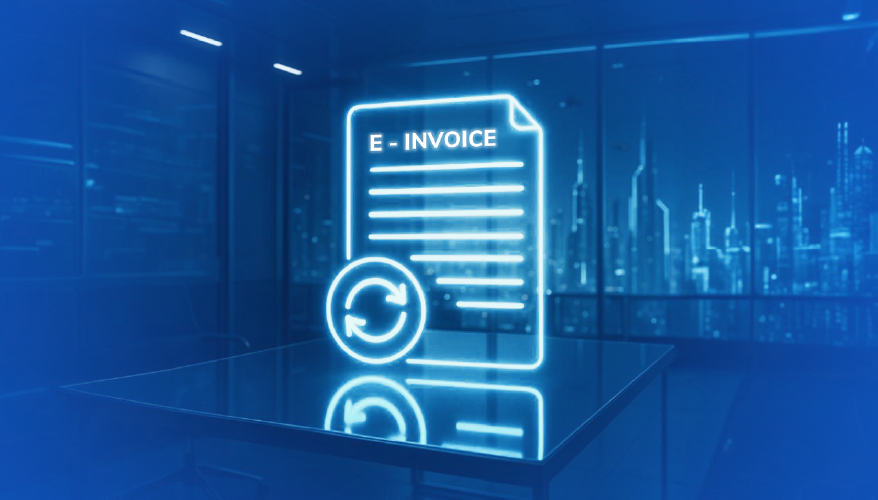
How IRBM is Ensuring Data Security and Privacy Monitoring in Malaysia
September 10, 2024
How to generate Malaysia e-Invoice through API model?
October 22, 2024Continuous Transaction Control (CTC) Model in Malaysia’s E-Invoicing: A Step-by-Step Guide for Businesses

Malaysia is embracing a new era of tax digitalization, with e-Invoicing becoming a central requirement for businesses. At the forefront of this transformation is the Continuous Transaction Control (CTC) model, a system designed to modernize the way regulators/tax administrators manage taxation by implementing real-time/near real-time invoicing processes. By moving away from paper-based methods to a standardized digital approach, the CTC model in Malaysia’s e-Invoicing aims to enhance efficiency, transparency, and tax compliance. For mid-sized businesses, this shift will be particularly impactful, as adapting to this framework will be essential for staying competitive in a rapidly evolving regulatory environment.
For companies navigating this shift, understanding the CTC model is crucial. It sets the foundation for the entire e-Invoicing process, ensuring that invoices meet regulatory standards and include relevant details before they are finalized, to be shared with trading partners. Ultimately, the CTC framework simplifies tax compliance and offers businesses the tools to operate more efficiently in a rapidly digitizing economy.
E-Invoicing in Malaysia – What is Continuous Transaction Control (CTC) Model?
The Continuous Transaction Control (CTC) model represents a digital-first approach to invoicing, where businesses generate, submit, and store invoices in a standardized electronic format approved by the Lembaga Hasil Dalam Negeri (LHDN)/Inland Revenue Board of Malaysia (IRBM). It ensures near real-time validation and monitoring of all invoices (B2B, B2C, or B2G), offering greater transparency and control over indirect tax-related transactions. By implementing the CTC model, Malaysian government aims to bring consistency and compliance to the e-Invoicing process, making it mandatory for businesses to follow uniform guidelines. This system not only reduces manual errors but also improves the efficiency of invoicing operations across industries.For companies navigating this shift, understanding the CTC model is crucial. It sets the foundation for the entire e-Invoicing process, ensuring that invoices meet regulatory standards and include relevant details before they are finalized, to be shared with trading partners. Ultimately, the CTC framework simplifies tax compliance and offers businesses the tools to operate more efficiently in a rapidly digitizing economy.
Why Use the CTC e-Invoicing Model in Malaysia? Key Business Benefits
- Improved Efficiency and Accuracy: The CTC model revolutionizes invoicing by automating parts of the submission and validation process. Businesses can speed up their invoicing cycle by eliminating certain manual tasks, reducing delays, and ensuring data accuracy. With automation in place, companies will experience higher productivity and fewer invoicing errors.
- Enhanced Transparency and Traceability: With every step of the invoicing process digitized, the CTC model brings a new level of transparency. Near real-time visibility allows businesses to track their invoices from creation to validation to sharing. This improved traceability helps reduce disputes, delays, and misunderstandings while fostering accountability throughout the transaction lifecycle.
- Simplified Tax Compliance: One of the most significant advantages of the CTC model is its ability to simplify compliance with tax regulations. By standardizing the format and processing of e-Invoices, businesses can automatically generate tax-compliant invoices that meet regulatory standards. This saves time and helps maintain accurate financial records in line with government expectations and tax regulations.
Preparing for e-Invoicing in Malaysia under the CTC Model
To ensure a smooth transition to e-Invoicing, businesses need to take several preparatory steps:- Evaluate Current Invoicing Processes Begin by assessing your existing invoicing systems. Identify areas/resources that need improvement or digitization, ensuring that your current ERP systems, such as SAP, are up-to-date and ready for the switch to e-Invoicing.
- Select a CTC-Compliant e-Invoicing Solution Choose an e-Invoicing solution that complies with Malaysia’s CTC regulations. Ensure that it integrates seamlessly with your ERP systems to avoid any disruptions in day-to-day business operations.
- Upgrade IT Infrastructure Ensure that your IT infrastructure is equipped to handle archival, secure transmissions, and increased electronic transaction volumes. Efficient data handling is key to maintaining support for the new system.
- Train Your Team Provide comprehensive training for employees on the new e-Invoicing system or subscribed solution. Educate them on the CTC model’s requirements to ensure they understand the compliance and operational aspects.
- Stay Updated on Regulatory Changes Regularly monitor changes in Malaysia’s e-Invoicing regulations. Ensure that your e-Invoicing solution adapts to the evolving standards, keeping your business compliant.
- Test and Validate the System Before full implementation, conduct thorough testing to ensure your data is complete, your system is compliant, and functions correctly. Test processes should validate both the accuracy and integrity of the invoices generated.
How IRIS MyeInvois can help you with e-Invoicing?
IRIS MyeInvois is your all-in-one e-Invoice management solution, designed to seamlessly integrate with your existing ERP or billing systems. No major changes required—just simplified, automated e-Invoicing. Key Features to Power Your Business:- Easily connects with any ERP or billing system via APIs or SFTP to create, manage, and submit e-Invoices effortlessly.
- Upload multiple invoices in CSV or JSON formats. Use the built-in tool to convert data to LHDN-approved formats, validate information, and fill in missing values.
- Manual e-Invoices Raise e-Invoices manually on the platform when needed, bypassing throttling and submission limitations of the LHDN portal.
- Manage multiple business entities, users, and roles with secure access, all under one platform.
- Future-proof your invoicing needs with PEPPOL for international transactions. Share invoices seamlessly, even if partners aren’t on the PEPPOL network.
- Email invoices directly to customers or vendors, whether they’re on using MyeInvois or not.
- Enhanced Control Invite guest users with view access and manage both seller and recipient-side activities from one account.
Start Now
Effortless e-Invoicing with minimal disruption to your current setup. Join the future of invoicing with IRIS MyeInvois today!




